Endless upgrades. Skyrocketing costs. And the constant frustration that your CMS is holding you back.
If you’re a Sitecore user, this probably sounds familiar. You’re not alone - over 100,000 websites have already moved away from Sitecore , a clear sign that businesses are outgrowing the platform in search of more flexible, scalable and cost-effective solutions. A recent survey by McKinsey found that over 80% of organisations have actively undertaken digital transformation efforts in the past five years, recognising the urgent need to modernise legacy systems and drive innovation.
At Candyspace, we are laser focused on putting users first - helping brands navigate complex CMS decisions to build digital experiences that truly deliver. To get to the heart of the challenge, we sat down with Gavin Masters, Candyspace's Principal Solutions Architect and OMVP (Optimizely Most Valuable Professional). As one of the leading experts in the space, Gavin has helped countless businesses rethink their digital platforms, and in this exclusive Q&A, he shares his take on the realities of Sitecore, the challenges of staying versus replatforming, and the opportunities that come with making the right move.
Gavin, you’ve worked with a wide range of businesses navigating digital transformation. From your perspective, how have customer expectations for DXPs changed in recent years, and are traditional platforms like Sitecore keeping up?
Gavin: Customer expectations for digital experience platforms (DXPs) have shifted dramatically. Businesses now want the best of both worlds - a comprehensive, integrated platform that handles content management, search, merchandising, and experimentation, while also offering the flexibility to integrate best-of-breed solutions where needed.
Interestingly, even the MACH (Microservices, API-first, Cloud-native, and Headless) providers - once champions of modularity are moving toward consolidating capabilities to meet this demand for unified, yet flexible, platforms.
Optimizely stands out here. They’ve rapidly evolved by acquiring and building new capabilities ahead of the curve. While Sitecore struggles to catch up, Optimizely anticipated these changing demands years ago. Their platform already delivers the advanced capabilities businesses now expect, like built-in experimentation and asset management, which were once seen as separate, standalone solutions.
Contentful and Storyblok also offer strong capabilities within their niches. Both are working to expand their features to keep pace with growing market demands. What makes platforms like Optimizely particularly compelling is their modular approach - you can mix and match tools to fit your marketing needs, offering flexibility without sacrificing core functionality.
Ultimately, the best choice isn’t about company size - it’s about digital maturity. Whether you’re a small business with advanced digital operations or a large enterprise with basic needs, the right platform is the one that aligns with how you work and how you want to engage your customers.
Gartner has ranked Optimizely as a leader above Adobe in the 2025 Magic Quadrant for DXPs - what does this tell us about the state of digital experience platforms today?
Gavin: Organisations like Gartner and Forrester invest significant time and resources into understanding market trends and customer demands. Their evaluations reveal not just where platforms stand today, but also where they’re headed. Optimizely’s upward movement in the Magic Quadrant reflects its ability to stay ahead of evolving customer needs and market expectations.

What sets Optimizely apart is its ability to react quickly to change. The platform has evolved rapidly through both strategic acquisitions and continuous innovation, allowing it to offer a comprehensive, tightly integrated suite of tools. This adaptability is essential as the DXP market shifts toward more modular, flexible solutions.
Another key factor is Optimizely’s technology foundation. Built on a Microsoft-centric architecture, it integrates seamlessly into existing enterprise ecosystems. This technical alignment, combined with a focus on delivering exceptional marketing capabilities, positions Optimizely as a future-ready platform that can meet the increasing demands for agility, experimentation, and personalized experiences.
Optimizely’s speed in integrating new capabilities is also a major advantage. Recent acquisitions, like its analytics platform, were incorporated into the ecosystem within months, showcasing an ability to deliver value faster and more efficiently. This rapid innovation cycle is a significant reason why Optimizely continues to lead the way in digital experience delivery.
Why do businesses find Sitecore complex to use and maintain?
Gavin: Sitecore missed a critical opportunity a few years ago. While Optimizely undertook a painful but necessary re-architecture to modernise their platform, Sitecore is still in the middle of that transition. We recently spoke with Sitecore customers who are facing significant replatforming costs just to upgrade from Sitecore 10 to XM Cloud.
Any business, when confronted with the cost of what is essentially a brand-new implementation, will naturally pause and ask: Are we still on the right platform? For organisations that have been on Sitecore for 10 years or more, the accumulated tech debt and frustrations don’t disappear with an upgrade. Moving to the latest version often means carrying over those legacy issues.

To truly take advantage of modern capabilities whether that’s composable architecture or advanced personalisation - businesses often need a fresh start. That realisation is leading many to explore alternatives that deliver the same, if not better, outcomes without the baggage.
With many Sitecore users being forced to upgrade, is it more cost-effective to move to the latest version of Sitecore or to replatform to a more modern CMS?
Gavin: In many cases, a migration onto the latest version of Sitecore is not value for money, especially if you're simply taking everything you've done on version 10 and moving to XM Cloud without fully leveraging the new features. To get the best out of those capabilities, you effectively have to go back to the drawing board and rearchitect your solution. Once you’re doing that, it becomes a replatform, not an upgrade. I think calling it an upgrade is probably a mistake from Sitecore’s perspective because everybody still holds onto that old-school idea where you just install the update, and suddenly you have a brand-new, shiny site. But with modern DXPs, the reality is much more complex.
Optimizely, on the other hand, actively supports businesses looking to replatform by offering several incentives for Sitecore customers to switch. Some of this support comes through cross-training and guided migration assistance, while other incentives focus on mitigating license costs. For businesses locked into multi-year Sitecore licenses, Optimizely will sometimes defer or discount their own license fees to reduce the financial burden of switching. These types of programs make the transition not only smoother but also more financially viable for organisations considering a move.
How difficult is it for businesses to innovate on Sitecore? What are the cost and time barriers that prevent teams from leveraging its more advanced capabilities?
Gavin: Many businesses struggle to innovate on Sitecore and a big part of that comes down to Sitecore partners being stuck in the old ways of doing things. We've seen this firsthand when inheriting codebases from customers moving from Sitecore to Optimizely. If you follow the traditional Sitecore approach, you can easily lock yourself into rigid structures that are difficult to break free from.
To get the best out of Sitecore, you need to fundamentally understand how the platform is architected. The problem is that many businesses assume the methods that worked on Sitecore 9 or 10 will seamlessly apply to Sitecore XM and that just isn’t the case. Rebuilding with outdated practices only adds complexity and limits a business’ ability to innovate.
In contrast, Optimizely is much more open and adaptable. Its framework allows businesses to create extensible, scalable solutions that let marketing teams pivot quickly whether that’s due to a shift in strategy, a business acquisition, or a new market opportunity. The best Optimizely agencies design solutions with this agility in mind, recognising that marketing today isn’t the same as it was 18 months ago and it won’t be the same 18 months from now.
For Sitecore users looking to replatform, what are the key next steps in their migration journey?
Gavin: I think the first step is to reach out and explore the capabilities of other platforms. We recently spoke with a Sitecore customer who has been on the platform for a long time, and it's become prohibitively expensive for them to maintain their aging codebase. They've almost assumed that every other platform carries the same costs, problems, and challenges but that's not the case. Simply going to market and understanding the modern capabilities of platforms like Optimizely or Contentful can reveal significant advantages and open up new possibilities.
Building a strong business case is critical. This means understanding not just the costs of maintaining your current Sitecore implementation, but also the long-term implications. What will it mean for your business if you're still on Sitecore in three or five years? How will it impact your ability to innovate and execute?
Many companies hold on to their legacy systems, hoping for a miracle—that Sitecore will release a patch to fix all the bugs or provide an easy upgrade path that takes 15 minutes instead of 50 days. But the reality is, that kind of fix isn't coming. If you're waiting for a breakthrough to solve these problems, it's time to take control and start planning your migration journey.
Wrapping Up…
Imagine a CMS that works with you, not against you. No more painful upgrades or hidden costs. Replatforming from Sitecore isn’t just about leaving frustrations behind, it’s about unlocking new possibilities.
As Joey Moore - Senior Director, Solution Strategy at Optimizely, puts it:
“Optimizely offers tailored migration incentives and comprehensive training to help customers transition from Sitecore with confidence. From guided onboarding to self-paced training and dedicated support, we ensure teams can confidently transition from Sitecore. With flexible incentives and robust enablement resources, we ensure that re-platforming is not only seamless but also a strategic upgrade towards enhanced performance and innovation.”
Isn’t it time to make the move?
To get in touch with one of our digital experts, you can book a complimentary consultation here.






